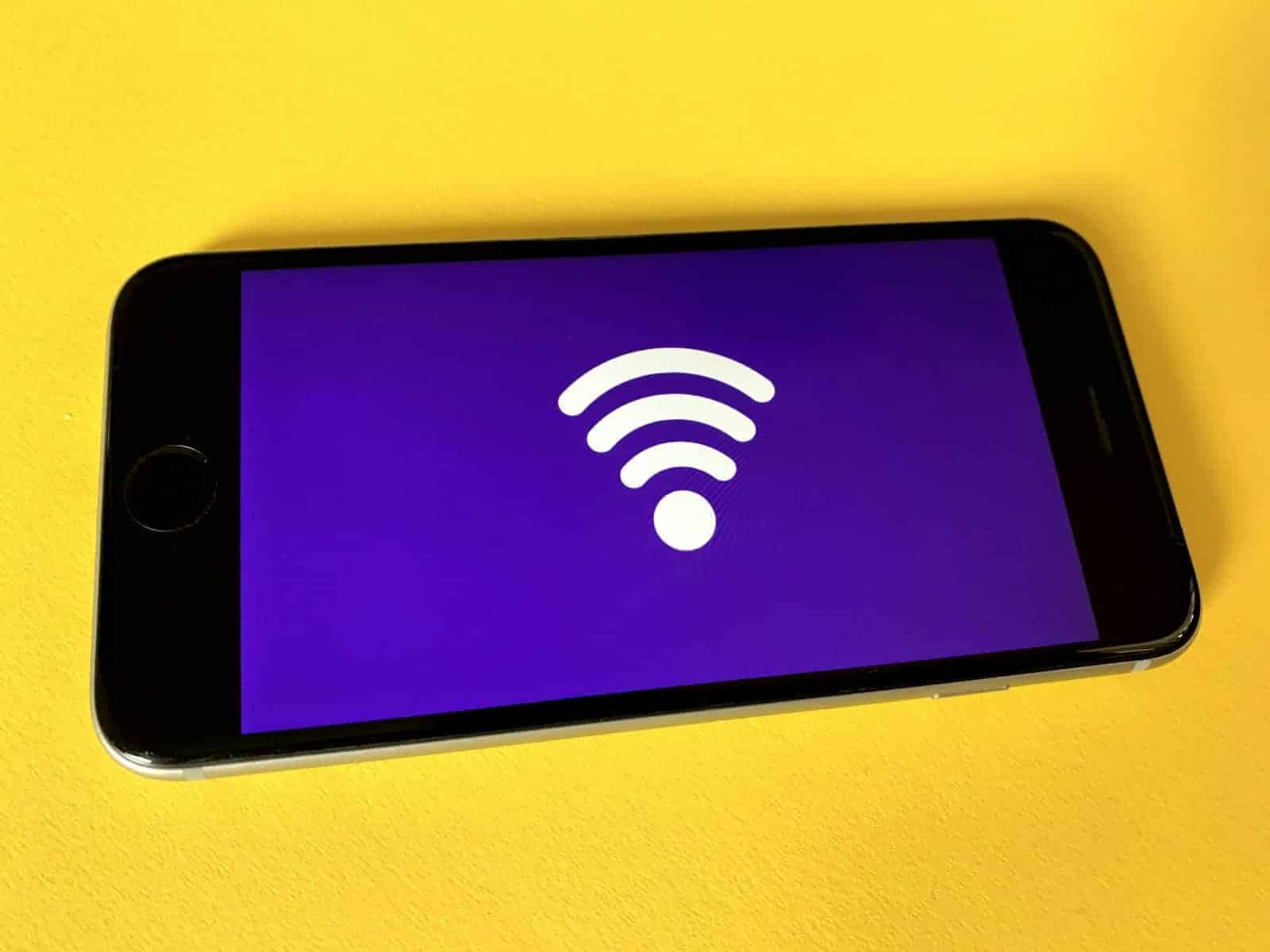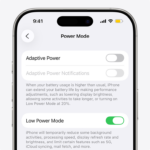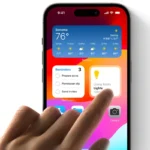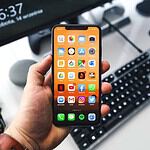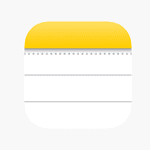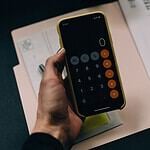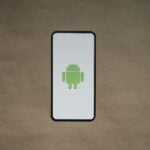Wi-Fi calling on an iPhone is a feature that many users find useful in areas with poor cellular reception. It allows you to place and receive calls as well as text messages over a Wi-Fi network instead of relying on a cellular network. When you enable Wi-Fi calling, your phone number stays the same, and calls you make will appear with your regular caller ID.
Setting up Wi-Fi calling is simple. You need to go to the settings on your iPhone, tap Phone and then Wi-Fi calling. Here you can toggle on the Wi-Fi calling feature. It will prompt you to enter an emergency address to ensure that emergency services can respond if necessary. This setup process ensures you stay connected even when cellular service is unavailable.
Using Wi-Fi calling is seamless. If your Wi-Fi connection drops during a call, the iPhone will switch to a cellular signal automatically so your call doesn’t get interrupted. This feature works perfectly in the background and is especially handy for those who travel often or live in regions with spotty network coverage.
✅ Requirements for Wi‑Fi Calling
Before you start, make sure you have:
- An iPhone 6s or later running iOS 15 or newer (recommended: iOS 18 or later in 2025).
- A Wi‑Fi connection with internet access.
- A carrier that supports Wi‑Fi Calling (most major carriers do — AT&T, Verizon, T‑Mobile, etc.).
- A valid SIM or eSIM with an active phone plan.
⚙️ Step‑by‑Step: Enable Wi‑Fi Calling on iPhone
Step 1: Open Settings
Go to Settings → Phone.
Step 2: Tap “Wi‑Fi Calling”
Select Wi‑Fi Calling → turn on “Wi‑Fi Calling on This iPhone.”
Step 3: Confirm Emergency Address
You’ll be asked to enter or confirm your emergency address.
This is used by emergency services (like 911 in the U.S.) when calling over Wi‑Fi.
Step 4: Verify Activation
Once enabled, you’ll see “Wi‑Fi” next to your carrier name in the status bar when connected to a Wi‑Fi network.
Example:
AT&T Wi‑Fi
Now, any calls you make will automatically use Wi‑Fi when your cellular signal is weak.
📱 How To Make a Wi‑Fi Call
Once Wi‑Fi Calling is turned on:
- Open the Phone app.
- Dial a number or select a contact.
- Tap Call — your iPhone will automatically use Wi‑Fi if it’s the best option.
You don’t need to do anything special — the phone switches seamlessly between Wi‑Fi and cellular networks.
🌍 How To Use Wi‑Fi Calling Abroad
Wi‑Fi Calling works even when you’re outside your carrier’s network, which can help you avoid roaming charges.
- Calls to U.S. numbers (for U.S. carriers) are usually free.
- Calls to international numbers may still incur charges — check with your carrier.
- Keep Airplane Mode ON and Wi‑Fi ON to force Wi‑Fi Calling when abroad.
(Tip: This is great for travelers using hotel or café Wi‑Fi.)
🧠 Troubleshooting Tips
If Wi‑Fi Calling isn’t working:
- Make sure Wi‑Fi is enabled and connected.
- Check that Airplane Mode is off (or Wi‑Fi is manually re‑enabled).
- Go to Settings → Cellular → Wi‑Fi Calling and toggle it off/on again.
- Restart your iPhone.
- Update iOS and carrier settings (Settings → General → About).
If the problem persists, contact your carrier to confirm Wi‑Fi Calling is supported on your plan.
🧩 Bonus: Enable Wi‑Fi Calling on Other Apple Devices
You can also make Wi‑Fi calls from your iPad, Mac, or Apple Watch if they’re linked to your iPhone.
To enable:
- On your iPhone, go to Settings → Phone → Calls on Other Devices.
- Turn on Allow Calls on Other Devices.
- On your iPad or Mac, sign in with the same Apple ID and enable Wi‑Fi Calling under FaceTime settings.
Now you can make and receive calls even if your iPhone isn’t nearby.
🏁 Summary
| Feature | Description |
|---|---|
| What It Does | Makes calls using Wi‑Fi instead of cellular |
| When It Helps | Weak signal areas, traveling, or indoors |
| Requirements | iPhone 6s+, iOS 15+, carrier support |
| Bonus | Works on iPad, Mac, and Apple Watch too |
In short:
Wi‑Fi Calling is a simple, free, and reliable way to stay connected anywhere you have Wi‑Fi — no more dropped calls or poor reception.
Key Takeaways
- Wi-Fi calling enables calls and messages using a Wi-Fi network.
- The iPhone settings menu is where Wi-Fi calling can be activated.
- Calls transition smoothly from Wi-Fi to cellular if needed.
Setting Up Wi-Fi Calling on Your iPhone
Wi-Fi calling is a feature on your iPhone that allows you to make and receive calls over a Wi-Fi network instead of using your cellular signal. There are a few steps to set up Wi-Fi calling, connect additional devices, and tackle issues should they arise.
Activating Wi-Fi Calling
To turn on Wi-Fi calling, open the Settings app on your iPhone. Select Phone and tap on Wi-Fi Calling. You’ll see a toggle that you need to switch on. A prompt might ask for your emergency address. It uses this location to help emergency services find you if you call them.
Adding Devices for Wi-Fi Calling
You can use Wi-Fi calling on devices other than your iPhone, like an iPad, Mac, or Apple Watch. First, ensure all devices are signed into the same iCloud account. On your iPhone, go to Settings > Phone and select Add Wi-Fi Calling For Other Devices. A list of your iCloud-connected devices will appear. Toggle on each device you want to use.
Troubleshooting Wi-Fi Calling
If Wi-Fi calling isn’t working right, start by checking if your device’s software is up to date. A restart can often fix common issues. Ensure that Wi-Fi calling is turned on and you have a strong Wi-Fi network signal. If problems persist, check your carrier’s coverage map or reach out to their customer service for help.
Using Wi-Fi Calling Features on iPhone
Wi-Fi Calling is a feature on iPhones that allows users to make and receive phone calls over a Wi-Fi connection. This is particularly useful when cellular service is poor or unavailable. Setting up and using Wi-Fi Calling is straightforward, and it works seamlessly with most carriers.
Making and Receiving Calls over Wi-Fi
To use Wi-Fi Calling, first ensure your iPhone is connected to the internet. Next, go to Settings, select Phone, and tap Wi-Fi Calling. Toggle the feature on to enable Wi-Fi Calling on This iPhone. You might need to enter or update your address for emergency services as it is vital for 911 calls. When activated, both phone calls and FaceTime audio calls can be made through Wi-Fi, using your regular phone number and contacts list.
Managing Wi-Fi Calls on Other Devices
Your iPhone allows you to manage Wi-Fi calls on other devices like an iPad, Mac, or Apple Watch. For this, go back to the Phone section in Settings and tap on Calls on Other Devices. Enable it if it’s not already on. Here, you can add or remove devices that you want to use for Wi-Fi Calling by turning each one on or off. These devices must be signed into iCloud with the same Apple ID.
Additional Wi-Fi Calling Considerations
Wi-Fi Calling is carrier-driven, making it important to check with your provider such as AT&T, Verizon, or T-Mobile for compatibility. Some carriers, including Mint Mobile and Ting, offer the service for free but always read the terms and conditions. Ensure your location is updated as it is necessary for emergency service connections. Unlike other apps like WhatsApp, Wi-Fi Calling uses your actual phone number and caller ID features are retained. This service is supported on iPhones starting from the iPhone 5c up to the latest models including iPhone 13 and iPhone 13 Pro.

